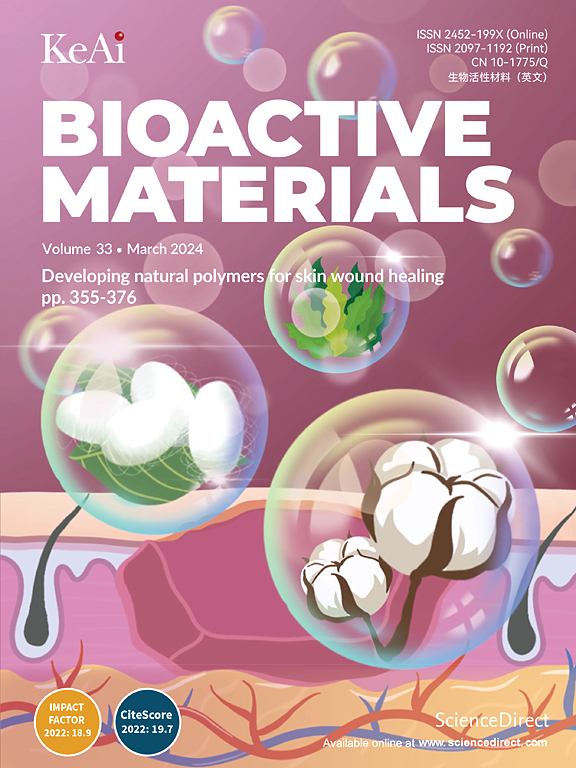Metal-phenolic networks specifically eliminate hypoxic tumors by instigating oxidative and proteotoxic stresses
IF 18
1区 医学
Q1 ENGINEERING, BIOMEDICAL
引用次数: 0
Abstract
Hypoxia, a prevalent characteristic of solid tumors, substantially impairs the efficacy of cancer treatments. However, there are no feasible clinical approaches for treating hypoxic tumors. Here, we develop metal-phenolic networks (CuGI) utilizing the natural glycolysis inhibitor (epigallocatechin gallate) and the essential metal element in the human body (copper ions), specifically targeting and annihilating hypoxic cancer cells. CuGI redirects the metabolic pathway of hypoxic cancer cells from anaerobic glycolysis to oxidative phosphorylation, thereby enhancing reactive oxygen species production and promoting oligomerization of lipoylated proteins in the tricarboxylic acid cycle. Through targeted induction of oxidative and proteotoxic stresses, CuGI induces apoptosis and cuproptosis specifically in cancer cells under hypoxic conditions while sparing normal cells. Moreover, cancer cell membrane-coated CuGI (CuGI@CM) exhibits enhanced tumor penetration effect and demonstrates commendable biocompatibility, effectively suppressing colorectal tumor growth. Importantly, CuGI@CM, when combined with vascular disruptors or radiotherapy which aggravate tumor hypoxia, synergistically potentiates therapeutic efficacy. Thus, CuGI represents a specific and potent nanotherapeutic capable of selectively eliminating hypoxic tumors, offering promise in combination therapies to address tumor hypoxia.

求助全文
约1分钟内获得全文
求助全文
来源期刊

Bioactive Materials
Biochemistry, Genetics and Molecular Biology-Biotechnology
CiteScore
28.00
自引率
6.30%
发文量
436
审稿时长
20 days
期刊介绍:
Bioactive Materials is a peer-reviewed research publication that focuses on advancements in bioactive materials. The journal accepts research papers, reviews, and rapid communications in the field of next-generation biomaterials that interact with cells, tissues, and organs in various living organisms.
The primary goal of Bioactive Materials is to promote the science and engineering of biomaterials that exhibit adaptiveness to the biological environment. These materials are specifically designed to stimulate or direct appropriate cell and tissue responses or regulate interactions with microorganisms.
The journal covers a wide range of bioactive materials, including those that are engineered or designed in terms of their physical form (e.g. particulate, fiber), topology (e.g. porosity, surface roughness), or dimensions (ranging from macro to nano-scales). Contributions are sought from the following categories of bioactive materials:
Bioactive metals and alloys
Bioactive inorganics: ceramics, glasses, and carbon-based materials
Bioactive polymers and gels
Bioactive materials derived from natural sources
Bioactive composites
These materials find applications in human and veterinary medicine, such as implants, tissue engineering scaffolds, cell/drug/gene carriers, as well as imaging and sensing devices.
 求助内容:
求助内容: 应助结果提醒方式:
应助结果提醒方式:


